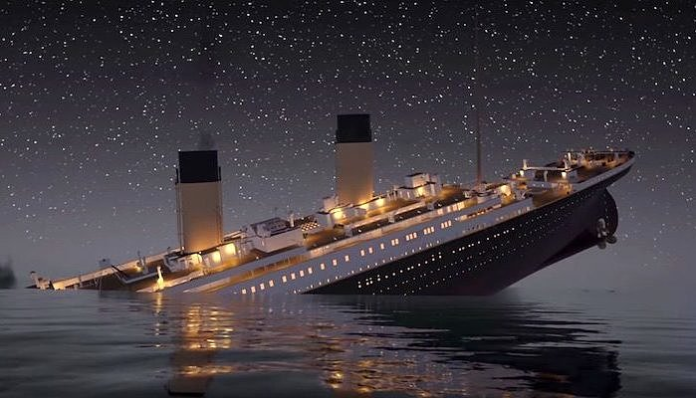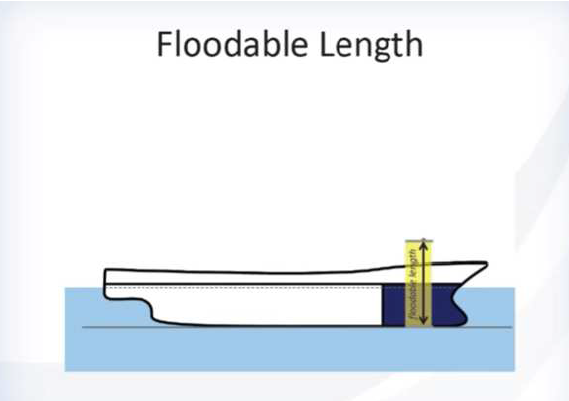How do ships get damaged?
Compounded operator errors
– Improper maintenance over time
– Multiple improper procedures leading to collisions with ships, rocks,reefs, piers, etc.
Storms, hurricanes, etc.
-Water on deck
-Physical damage to hull, communications, radar, rudder, propeller, etc.
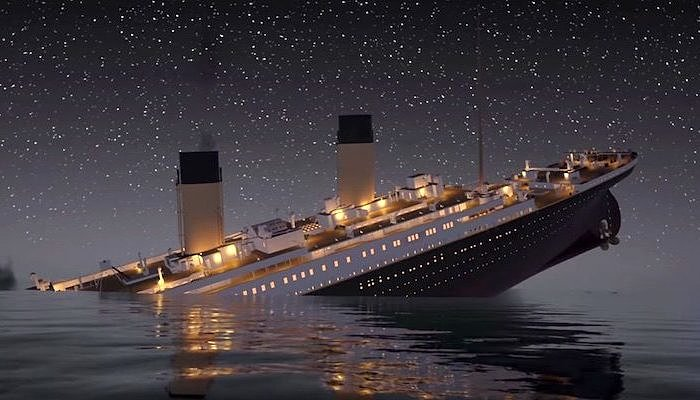
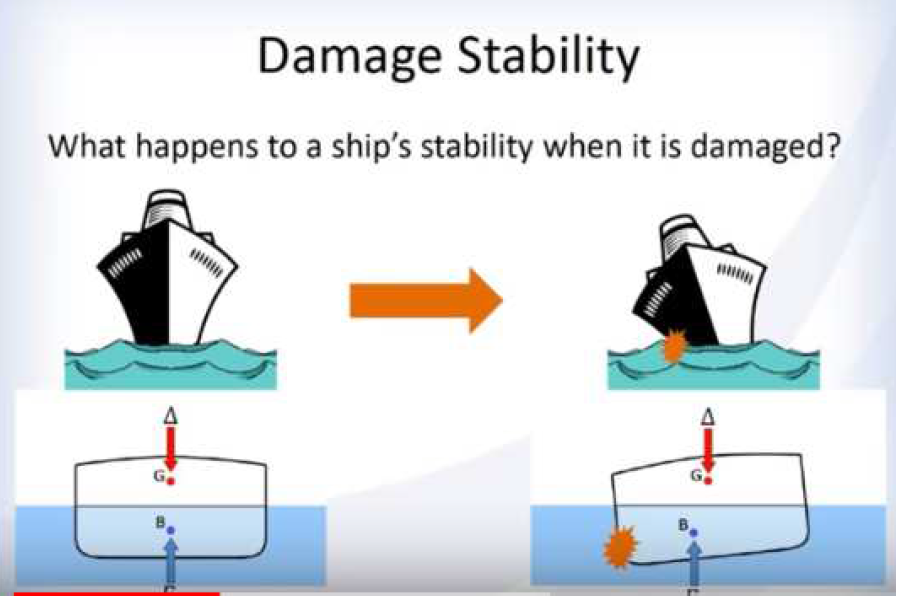
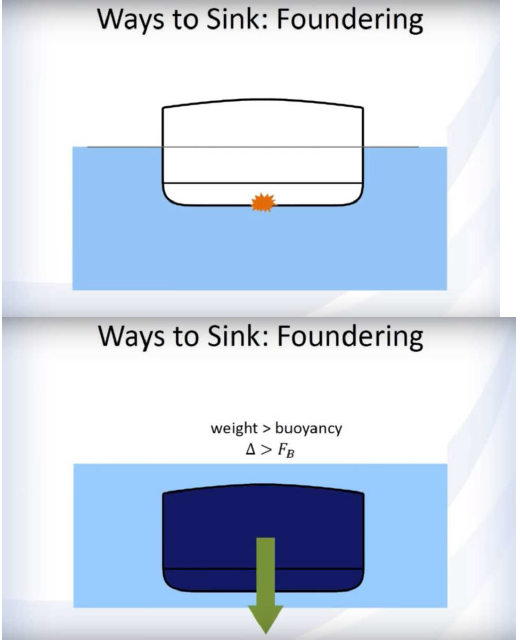
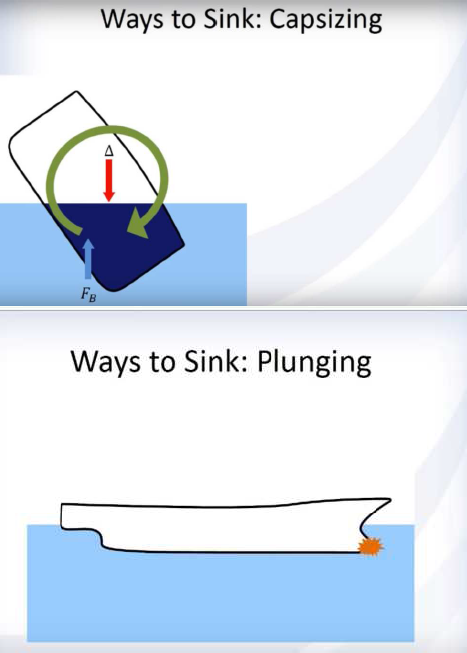
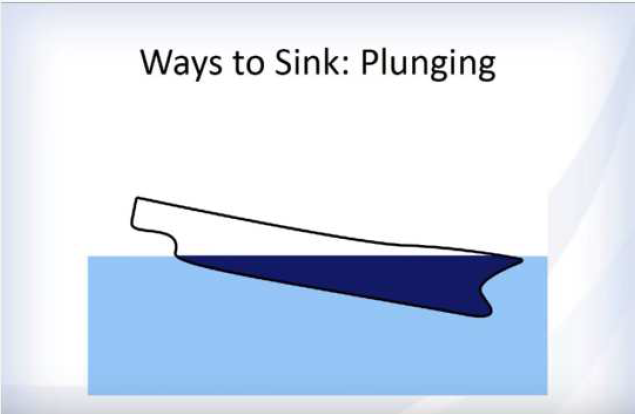
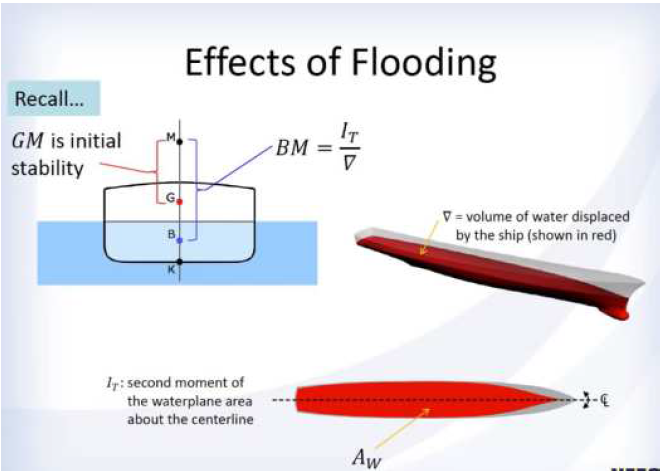
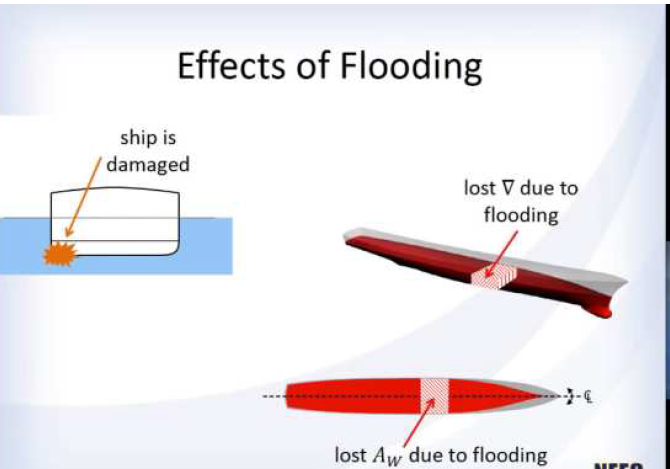

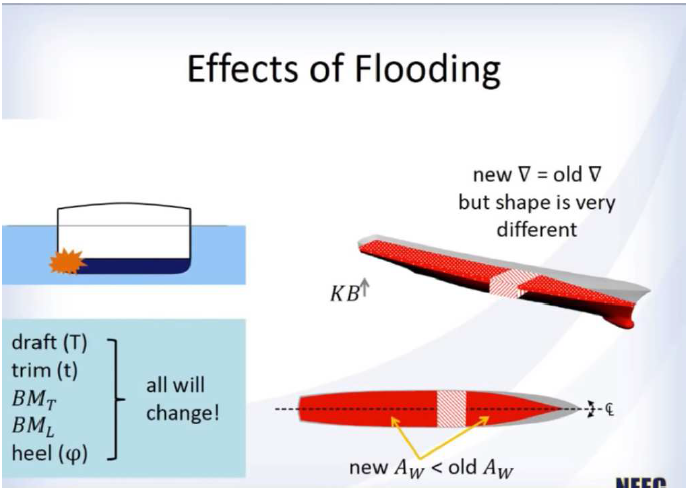

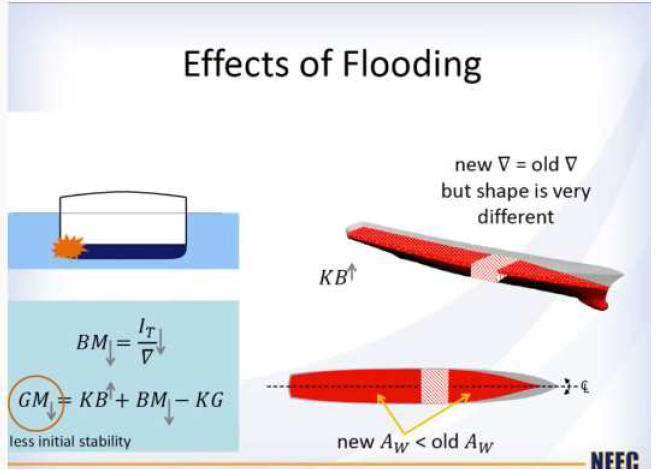
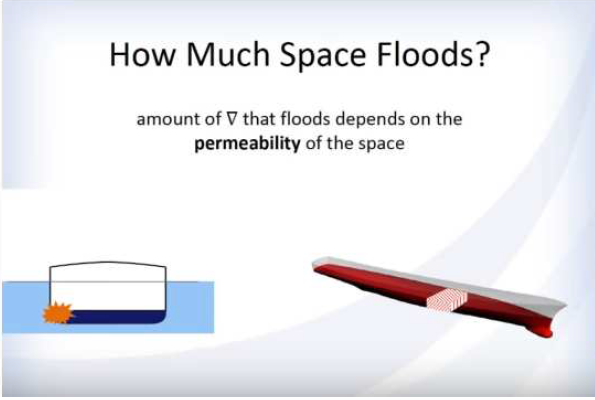
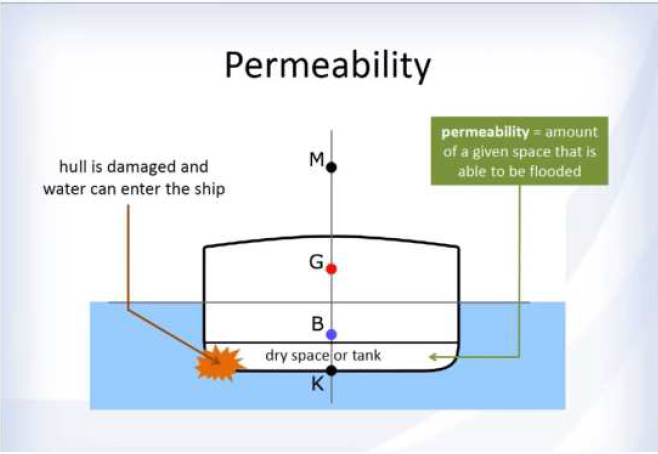
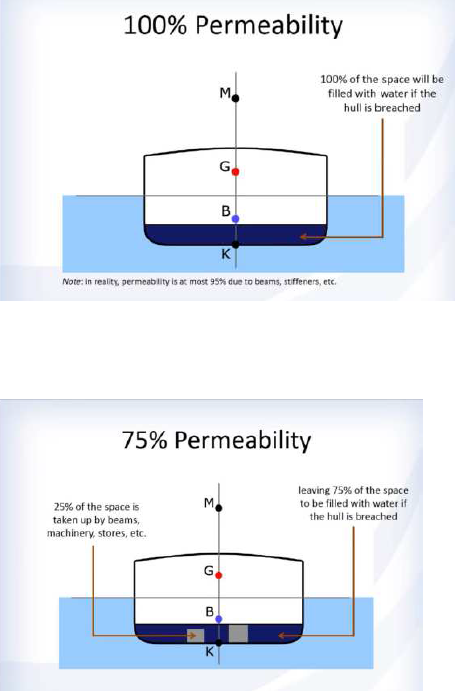
Cargo oil has a permeability of around 5% whilst grain cargo has a permeability of 60–65%. The lower permeability will instantly allow less ingress of water following a bilging incident.
A double-bottom tanker will not usually carry cargo at a higher level than will a comparable single-hull SBT tanker. And because of the bottom void, which will fill with cargo if the inner surface is punctured, the hydrostatic head of oil relative to the sea will be less than for a single-hull MARPOL tanker. Therefore, the outflow actually will be similar, or even less, in a double-bottom tanker (the effect of hydrostatic pressure differentials )
Floodable length is the length of the compartment which if immerse will cause the ship to sink up to the margin line.
MARGIN LINE: is an imaginary line drawn 76mm below the uppermost surface of the bulkhead deck.The deck line is a horizontal line marked amidships on each side of the ship. Its upper edge shall usually pass through the point where the continuation outwards of the upper surface of the freeboard deck intersects the outer surface of the shell plating.
The deck line is fixed and outlined when the vessel is built in the yard. It does not changed during the life of the ship. The deck line mark is 300 mm long and 25 mm in width.
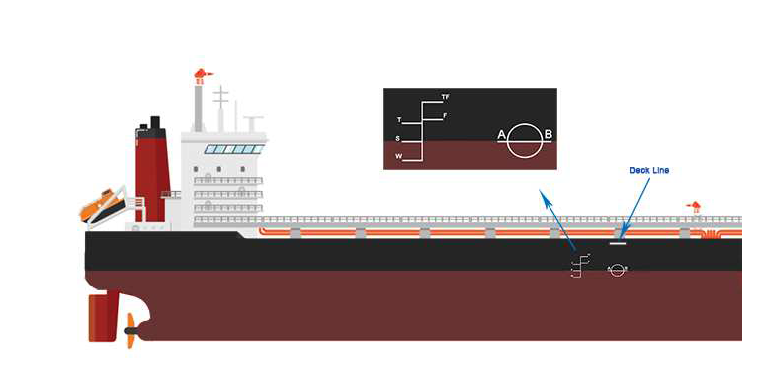
Which ship will have more chances of to survive damage ,
–No bulkhead
–One bulkhead
Restricting Flooding Effects
– Watertight bulkheads divide space; contain flooding to minimum number of spaces.
– Number of watertight spaces calculated by floodable length.
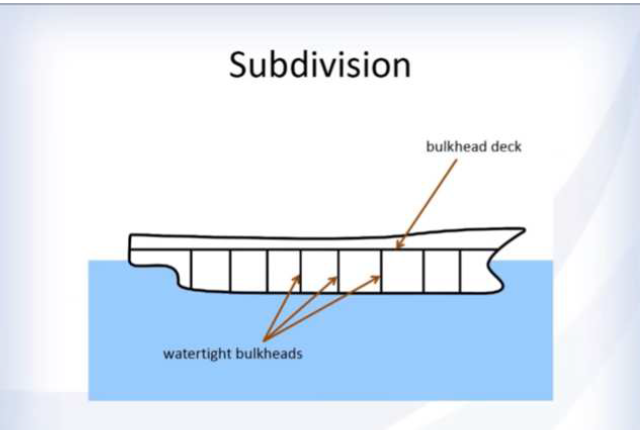
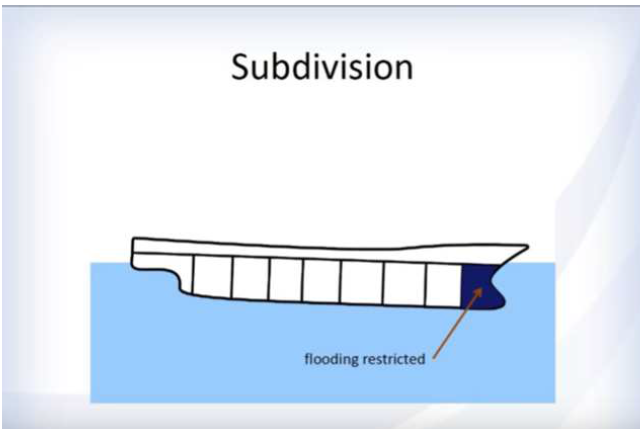
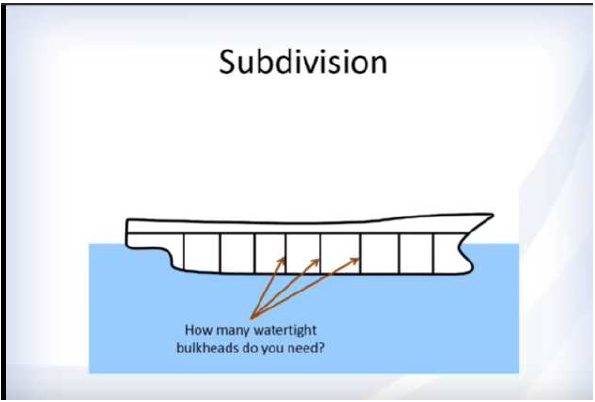
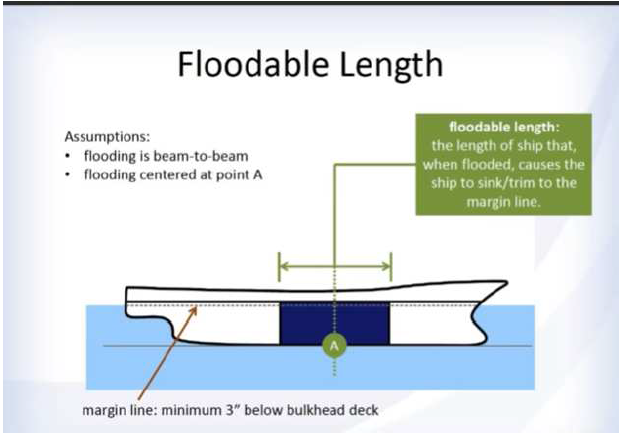
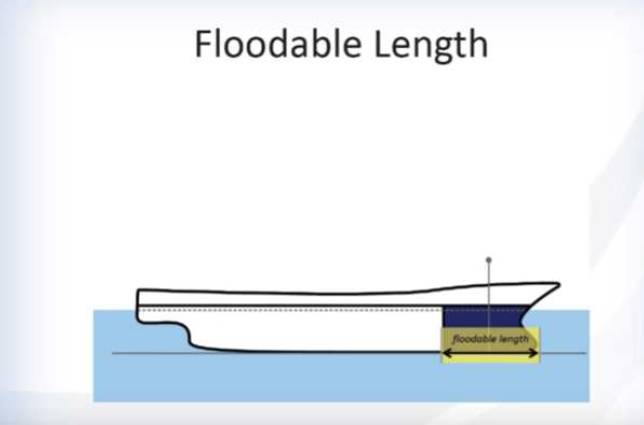

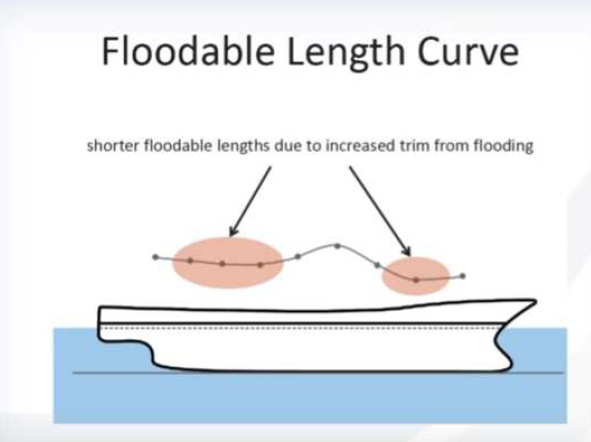
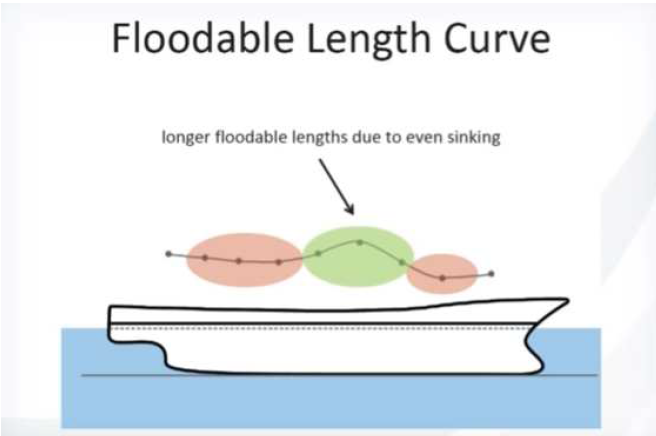
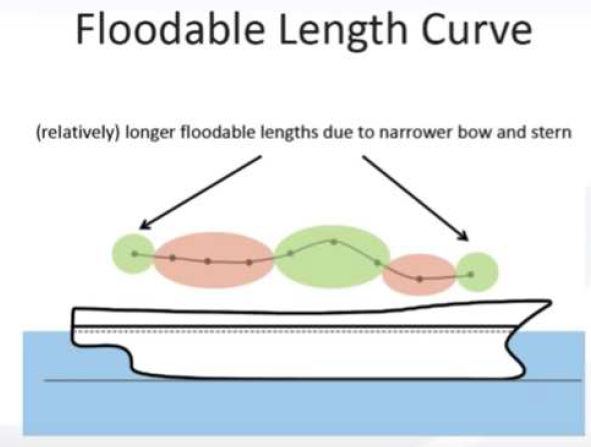
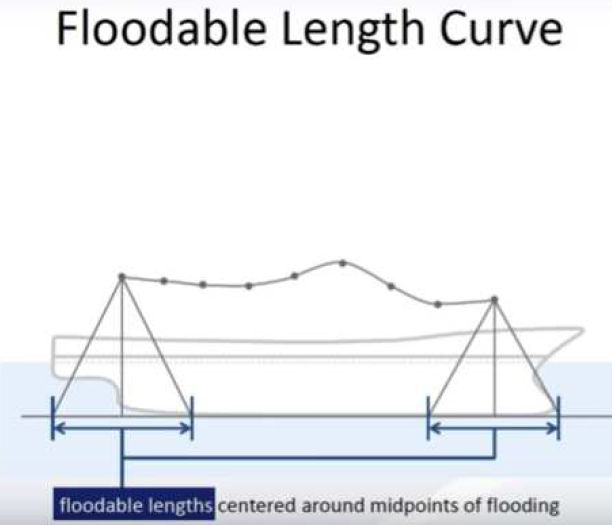
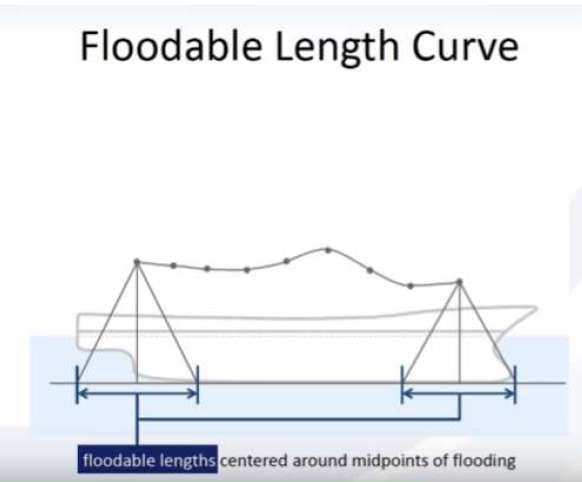
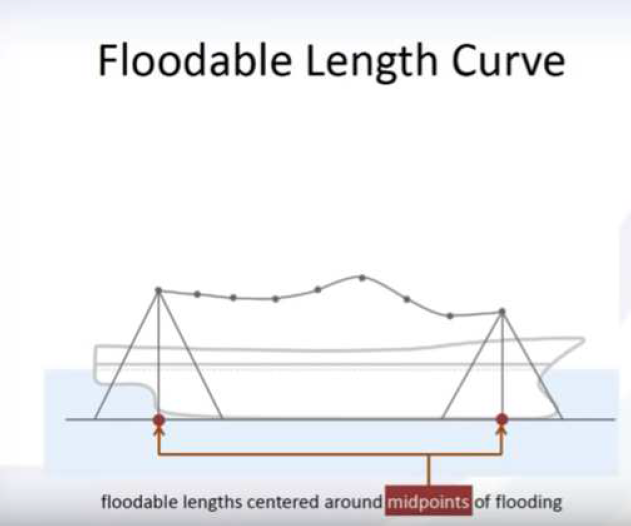
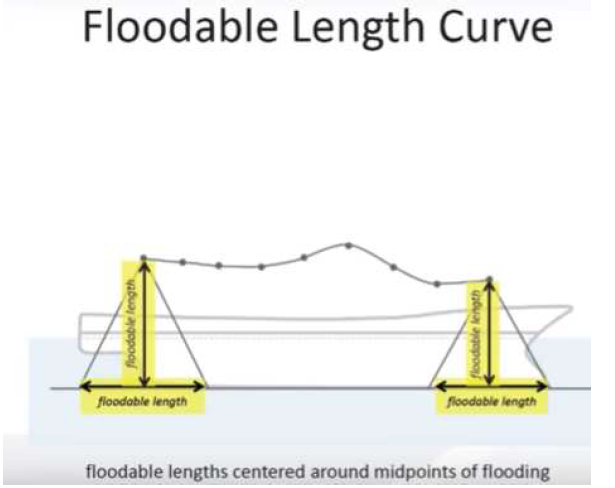
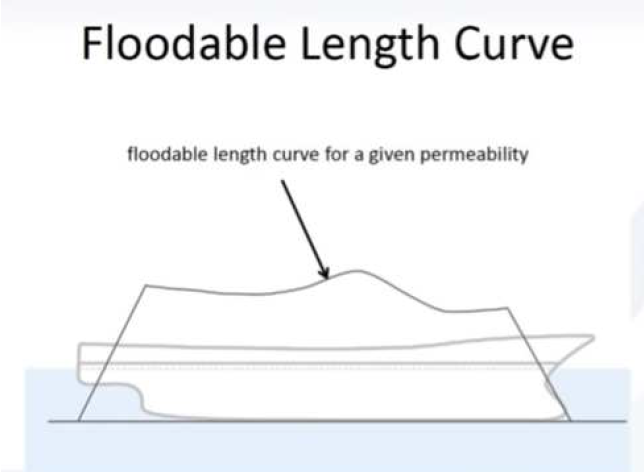
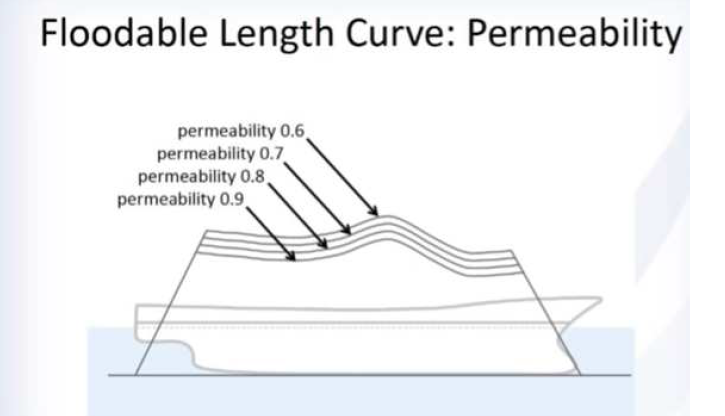
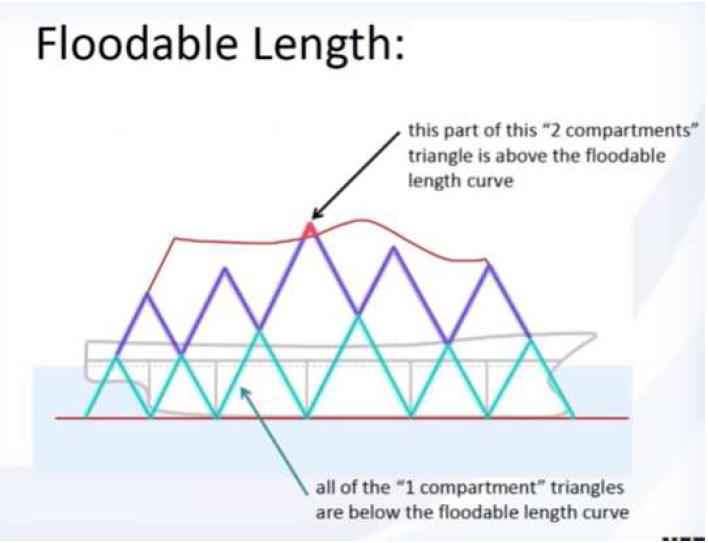
Evaluating Damage Stability
Old ways:
– Floodable length, factor of subdivision, etc.
New ways:
– Safety of Life at Sea (SOLAS) 2009 recommended probabilistic damage assessment

Very Large Crude Carriers (VLCCs) between 200,000 and 300,000 deadweight tons (dwt)
Ultra Large Crude Carriers (ULCC) greater than 300,000 dwt.
5,00,000 dwt Supertankers are a remarkable technological response to market conditions that encourage economies of scale without apparent bound in the 1960s, 70s, and 80

